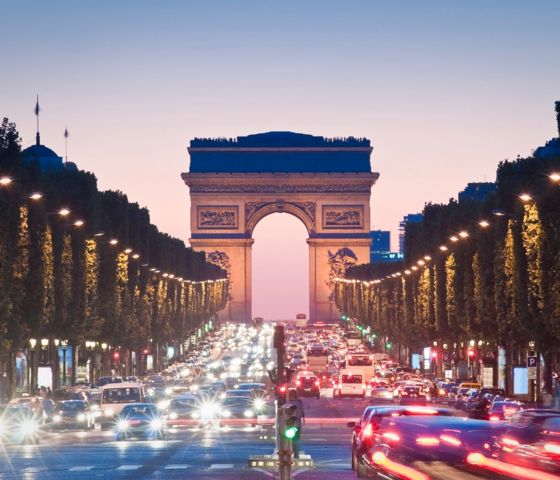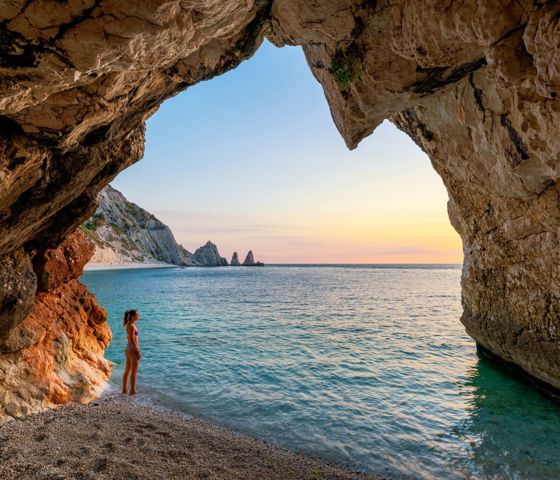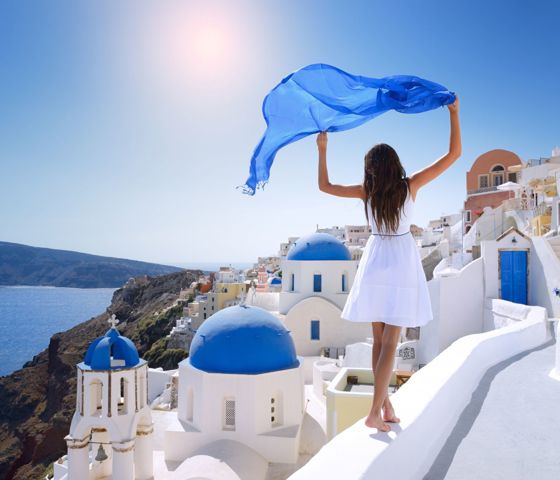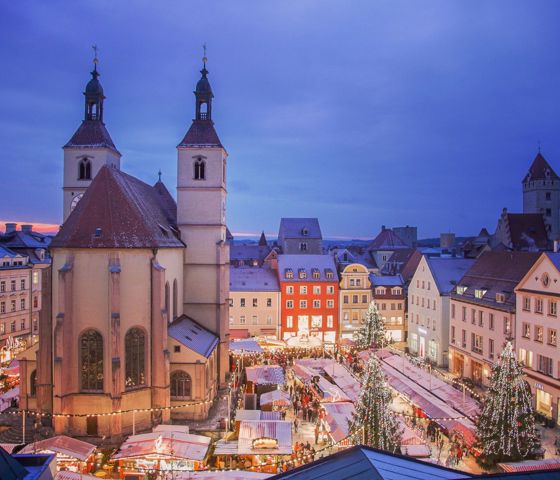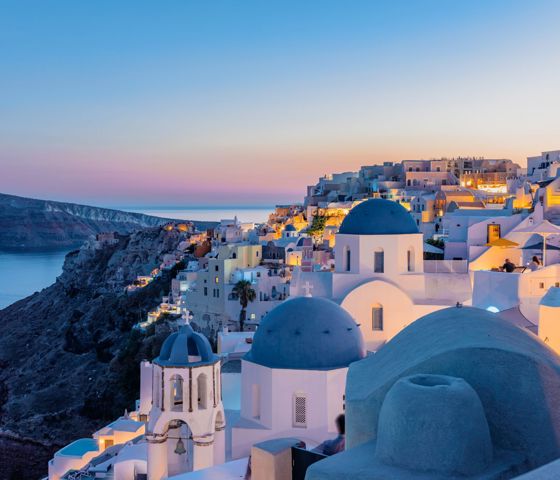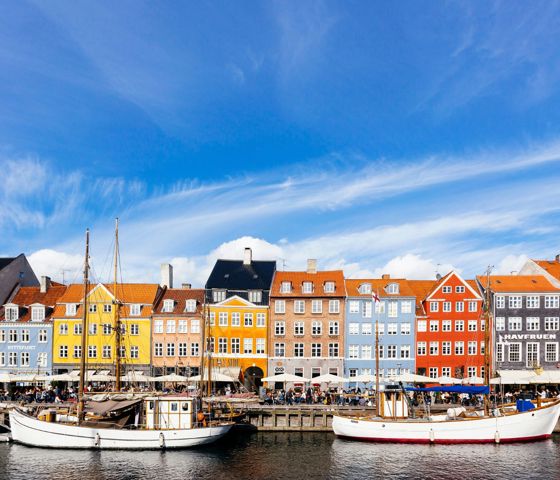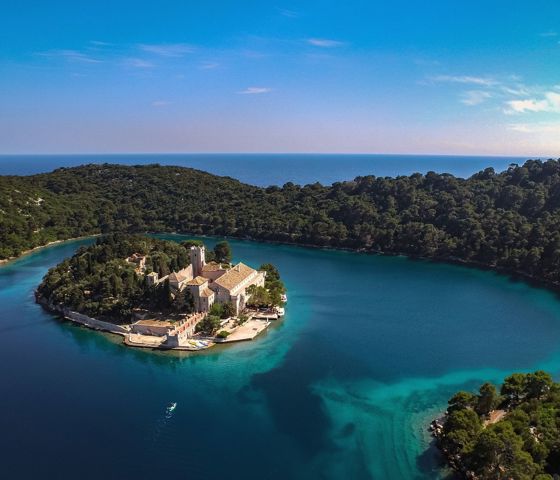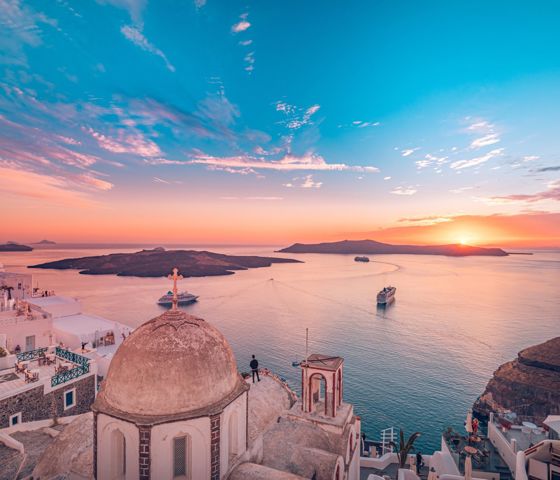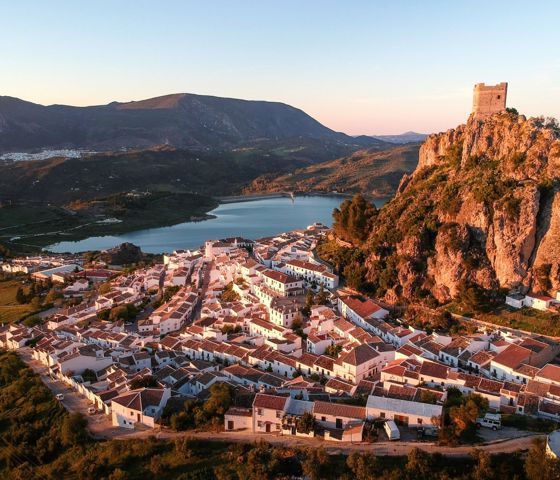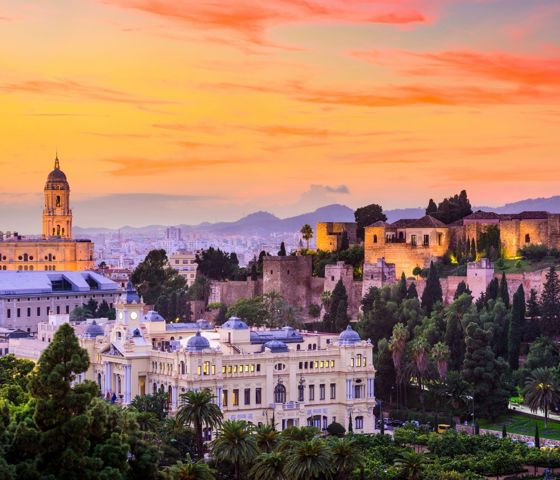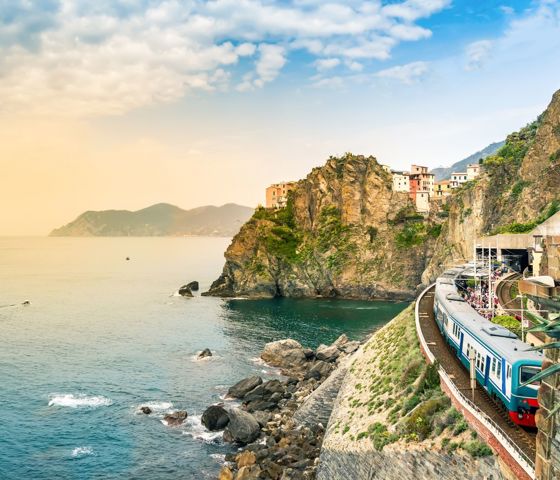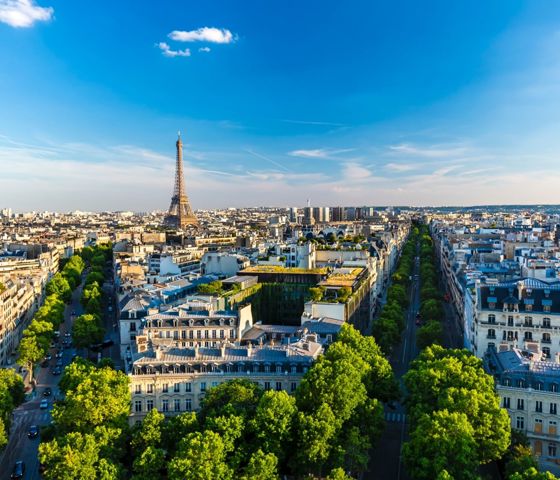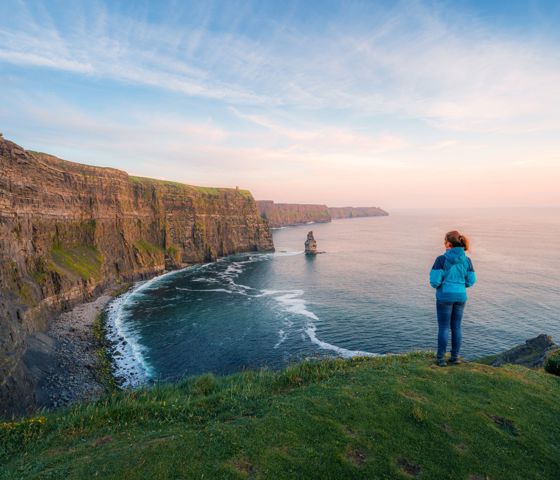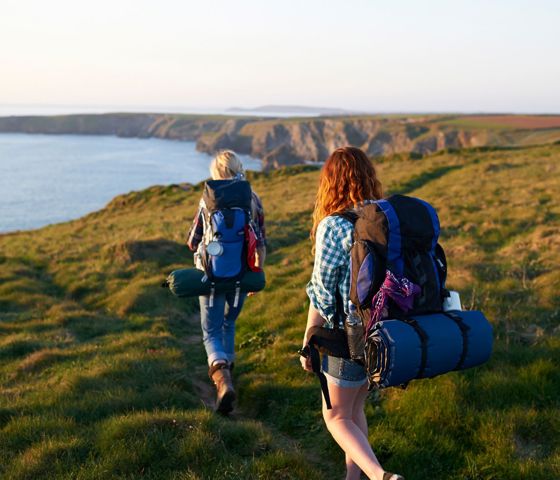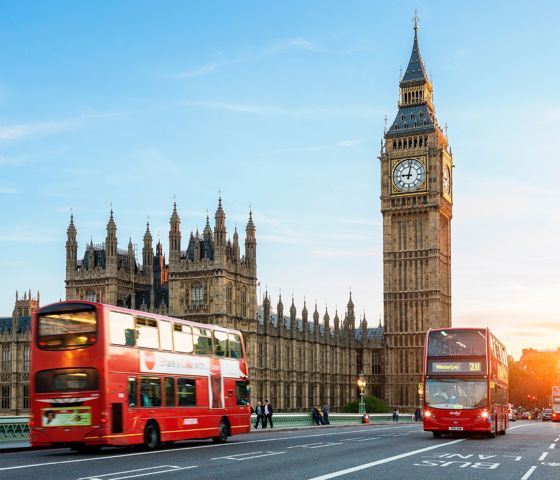“You must make sure you validate your ticket before departure for regional trains or you could face a fine.”
Italy Know before you go
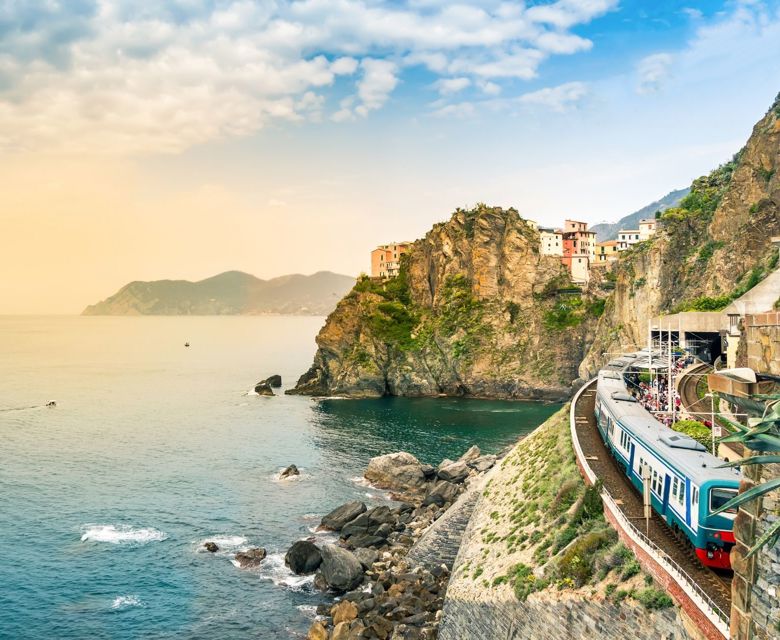
Planning a trip to Italy? Before you start packing, here’s what you need to know to make the most of your Italian adventure. From historic cities and stunning countryside to world-famous cuisine and local customs, Italy has something for everyone.
Whether you're dreaming of exploring the canals of Venice, savoring Tuscany’s wine, or indulging in Rome’s rich history, our Italy travel experts gives you the lowdown on all things Italy. This is your definitive guide to making the most of your Italian holiday!


Italy. Real name EAT-aly because it’s full of so many delicious carbs (and gelato) that you won’t want to do anything but. Or at least that’s what you’ll think, until you see the Roman cities and the golden coastline flanked by toppling hillside villas; and the rolling countryside, sun-baked grape vines and the zippy Vespas ridden by impossibly good looking locals. Then you’ll want to try it all – and never, ever leave.
1 | How long can I stay without a visa?
New Zealand citizen holders with a valid New Zealand passport are not required to obtain a visa to enter Italy, as long as they stay no more than 90 days.
2 | What’s the local currency?
Euro.
3 | Do I need to tip?
More often than not, for food and drink, the tip is included in the final price. Simply look for “servizio incluso” on the bill. If you don’t see this, a 10-15% gratuity is considered normal if you were happy with the service. In cafes, round your bill up to the nearest Euro, the same goes for taxis. For doormen and the bellhop, €1 to €2 per bag will be gratefully received.
4 | Transport to and from the airport
Getting from Rome Airport, Fiumicino - Leonardo da Vinci airport to central Rome:
Regional Trains (FL1)
The regional trains depart every 15 minutes Monday – Friday (every 30 minutes on weekends and public holidays). Stops include Rome Tiburtina, Rome Ostiense, Rome Trastevere, and they reach Rome Termini (central train station) 55 minutes after departing the airport.
Leonardo Express
A non-stop train service connecting Leonardo da Vinci Fiumicino Airport with Termini Station, Rome's train hub, in 32 minutes. Trains depart every 15 minutes, starting from 6:38am to 11:38pm daily.
Taxi
There are fixed fare taxis to any destination in Rome for 50 Euros. Grab the official, licensed taxis (white cars with taxi number on side) outside of the airport.
We guarantee after a 24+ hour flight from NZ, you won't want to deal with a transfer via public transport. Ask your HoT consultant about booking a transfer before you even leave NZ.
5 | Getting around
Uber: Uber is available in most large Italian cities.
Taxi: Be aware that in Italy, taxi drivers start the metre from the moment they get the call, not when you actually get in, so it might be wiser to hail one (a registered one). In Rome, fares change depending on day and time; night time is more expensive, as are Sundays. And don’t be surprised if you get charged an additional €1 for each piece of luggage you pop in the boot.
Self-drive/ hire a car
Parking Rules vary from city to city but as a rule of thumb:
- Blue - parking is limited and you either must buy a ticket from a street machine and display it on your dash board, there will be a sign to tell you the maximum time allowed.
- Yellow - handicapped or loading zone, do not park in yellow spaces.
- Red - means resident only parking.
- White - can mean free parking or can mean resident only parking. The best bet is to park in a pay garage. If this is not possible, try to find a white marked space but read the signs carefully in case they are resident only.
If you follow the sign posts marked ‘centro’, this will take you to the town centre and you will usually find parking but will have to pay.
Be careful entering the centre of cities as they are usually restricted traffic zones and have tele-cameras. The fine will be put on to your credit card if you have a hire car.
Speed limits (often ignored by Italians and change anytime)
- 50 km/h in urban areas
- 80 km/h in secondary roads
- 110 km/h dual carriageways
- 130 km/h on motorways (autostrade)
Trains
Traveling by train is a popular and efficient way to explore Italy, offering everything from regional to high-speed options. The country’s extensive rail network connects major cities and scenic spots, making train travel a convenient choice.
For regional trains, remember to validate your ticket before departure to avoid fines. High-speed trains, like the Frecciarossa and Italo, provide quick and comfortable journeys between major hubs. Enjoy the scenic views and ease of travel as you explore Italy!
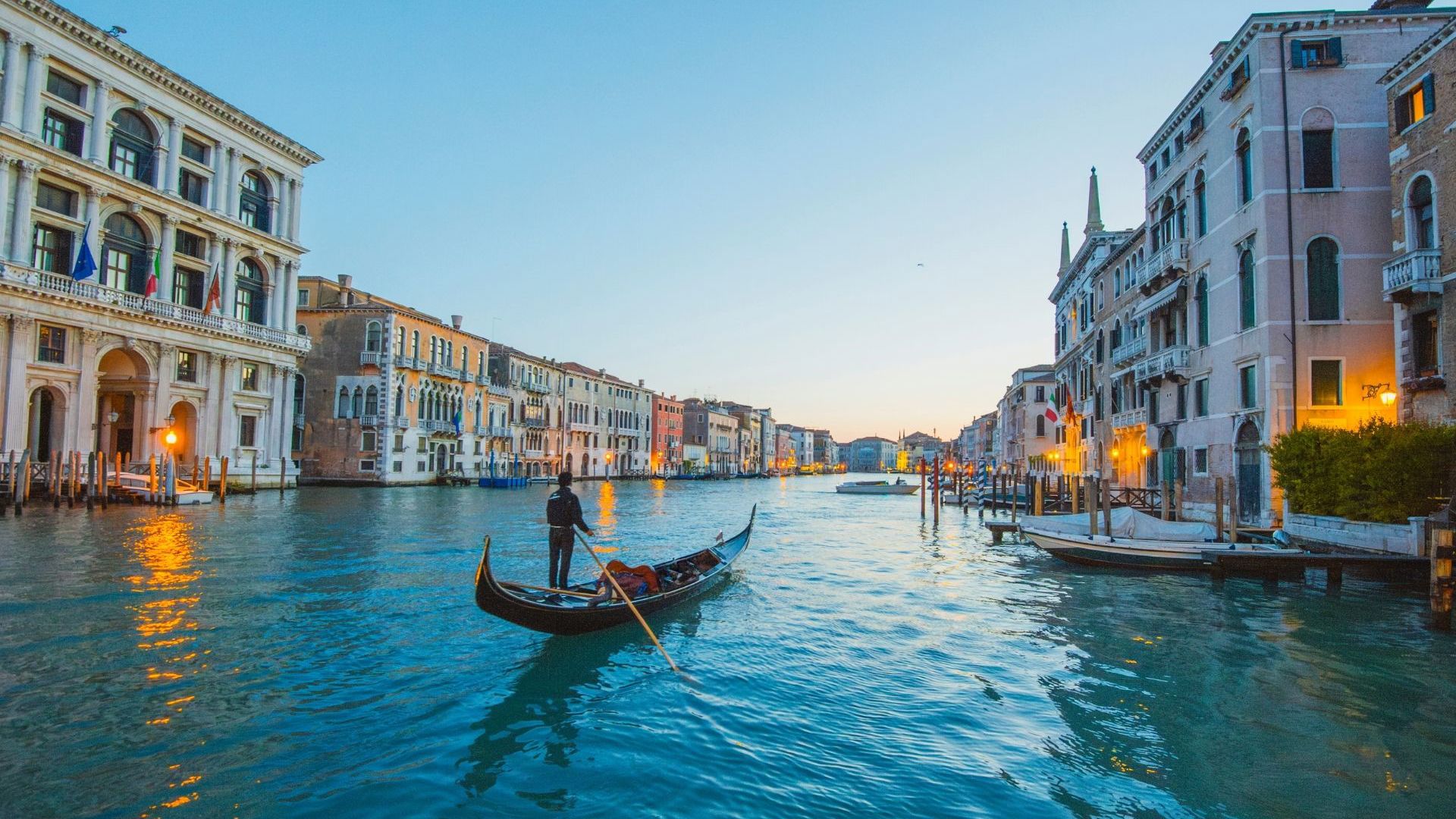
6 | Weather: What can you expect when you go?
July/summer temperatures range between 22–24 °C in cities such as Milan or Venice. Head south of here and you’ll hit 24–25 °C. Coastal regions of central and southern Italy settle between 23 °C to 27 °C in July. If you’re having a dalliance with Italy in winter, expect a considerable difference between the north and the south. January days can be as low as −2 °C (28 °F) in Milan and as high as 20 °C in Palermo.
We recommend safely and securely storing three important travel documents (your passport, credit card and driver's license) on your phone. Use an app such as Traveler ID which will store a series of documents in one place. Of course, you might lose your phone, so also store them in the Cloud, or your saved emails.
7 | Top 10 phrases
- Per favore (please).
- Grazie (Thankyou).
- Mi chiamo (I call myself).
- Buongiorno (Good Day) Use before, and up until lunchtime
- Buona sera (Good evening) Use after lunchtime
- Buona notte (Goodnight)
- Mi piace (I like)
- Quanto costa? (How much does it cost?)
- Un caffè, per favore. (A coffee, please)
- Parli inglese? (Do you speak English?)
8 | Rules and customs
Photocopy your passport: By law, you’ll need to carry a photocopy of your passport at all times and smoking is banned in all public places.
When to drink coffee: Don’t worry too much about other travellers telling you about Italians scowling at coffee drinkers who order cappuccinos and lattes after 11am. It’s not customary for an Italian to do so, but tourism is huge in Italy and they are quite happy to serve their visitors a latte whenever they want one.
Calcio in Costume: Every June in Florence, a traditional football (Calcio) match is held between the city's neighbourhoods. Teams dress up in 15th Century costume in the colours of their burb and matches are played in Piazza Santa Croce. Dates may change but usually 16, 24, 30 June and if you are in Florence on these dates don’t miss it.


9 | Where to have fun
Unlike most nations with ample tourist attractions, it’s actually the obvious things that offer the most fun in Italy. You absolutely must try a Tuscan red and glide the Venetian canals aboard a Gondola, and you should definitely eat pasta in a trattoria spilling into the street. Sip on a glass of spumante at a bar with a glorious balcony, spend days soaking up the Amalfi Coast sunshine and navigate a gleaming sailing boat across Lake Garda. If you leave without nursing an espresso at a pavement café or without seeing Michelangelo's David in Florence, the jaw-dropping Sistine Chapel, Pompeii, Sicily and every single inch of Rome, well, you’ll leave disappointed. It’s probably here we should mention you need at least six months in Italy.
10 | What to do in an emergency
Italy’s violent crime rates are low compared to most European countries. For emergencies, call 112.
We recommend safely and securely storing three important travel documents (your passport, credit card and driver's license) on your phone. Use an app such as Traveler ID which will store a series of documents in one place. Of course, you might lose your phone, so also store them in the Cloud, or your saved emails.
11 | Mobile usage – to roam or not to roam?
If your phone is unlocked you’ll be able to purchase an Italian SIM card. TIM and Vodafone are two of the best for foreigners as they both offer tourist plans. Approximately €30 ($50) for 30 days. No contract. Includes local calls, texts and CAPPED data.
12 | HOT’s top 5 Italian eats
1. Risotto al Nero di Seppia: The original Italian risotto derives from northern Italy but you’ll want to try the speciality of the Veneto region, Risotto al nero di seppia. Particularly fun to eat because it’s black; a result of the key ingredient, cuttlefish, which are cooked with their ink-sacs intact.
Try it: Ristorante Tintoretto in the Veneto capital, Venice. Off the main canals and more relaxed than most Venetian pit stops, the black risotto is always a main player on the menu.
Address: Fondamenta Trapolin, 2578, 30121, Venice
2. Gelato: Peaks of pastel-coloured gelato tumble from their plastic tubs and an assortment of sweet sugary treats rest perfectly across the top.
Try it: You’re in Florence’s renowned Gelateria La Carraia – AKA gelato heaven.
Address: Piazza Nazario Sauro, 25/r, 50124, Florence.
3. Panna Cotta: You thought cream was creamy, but wait until you discover Italian panna cotta. Combining cream, milk, sugar, vanilla and gelatine, the result is beyond magnificent.
Try it: All the desserts are sublime at Cinghiale Bianco Ristorante in Florence, but you'll leave raving about the panna cotta.
Address: Borgo S. Jacopo, 43, 50125 Florence.
4. Tortellini: Said to be inspired by Lucrezia Borgia’s navel button (she was the daughter of Pope Alexander VI) Tortellini reigns from the region of Emilia and - if you look at it from the right angle – resembles the shape of a belly button.
Try it: In the gastronomic heart of Italy, Bologna. Renowned for bolognaise but also tortellini. Ignore the guidebooks that recommend all the obvious spots and seek out La Traviata instead. A family run trattoria serving all of Bologna's finest creations.
Address: Via Urbana, 5, 40123 Bologna.
5. Affogato: Combining two of Italy's finest creations, a big dollop of gelato is added to a single shot of espresso. Add a crunchy side-serve of biscotti and a nip of Frangelico, a hazelnut liquor, and you're in business.
Try it: Rome’s Bar San Calisto. A local favourite with a cheery vibe to match. Bag yourself a seat outside and order that affogato - nothing mixes better than Italian coffee, gelato and people watching.
Address: Piazza di S. Calisto, 3, 00153 Rome.
13 | Is the water safe to drink?
Unless you see "NON POTABILE", tap water is safe to drink. Water in southern Italy might sometimes taste a little different because it comes from desalination, due to extended droughts. If in doubt, or you’re not a fan of the flavour, bottled water is readily available.
14 | HOT’s top insider tips for Italy
-
Hotels in Cinque Terre: You can’t drive up to the door of your hotel. Your car must be parked in the public car park (which can be pricey approx €20+ per day) and you walk to your hotel.
-
Getting around Cinque Terre:
Purchase a Cinque Terre Card on arrival which allows use of the walkways of the park and unlimited use of the train system. The train links all 5 villages (approx 5-10mins between each one) and there is a limited boat/ferry system. You should try and see at least some part of the park by water.For the best views in Florence: Ascend Giotto’s Bell Tower. The tower attached to The Duomo. 414 steps and some of the best views over Florence.
-
Never get lost in Venice: Venice’s corner buildings have arrows pointing to San Marco Square, Rialto Bridge or St Lucia Station. You might go the long way but follow the arrows and you will get there.
-
Piazza prices: Be aware of 'piazza' prices: For example, at many of the outdoor seating areas in cafes in Venice's infamous St Mark's Square, a 20 Euro fee will be added to your bill for sitting in such a prolific spot.
-
Rome's cheaper neighbourhood: Trastevere, this trendy and authentic neighbourhood is off the main tourist area and therefore prices are more reasonable, you will find lots of small bars, restaurants and trattorias along with some great shops.
-
Traditional home-cooked food: Baghino Restaurant in Prato. An old Italian tavern offering the best in Italian hospitality, it’s authentic, charming and bursting with enticing smells. You’ll enjoy traditional Tuscan cooking at its very best - so much so there are more locals here than visitors, so you know it's good.
- Italian Cooking Class -What better way to learn how to cook (and devour) authentic Italian cuisine. Use fresh ingredients and watch the masters at work - a must-do while in Italy. Don’t want to cook; you can dine with a local in their home – another amazing experience. We recommend Pensiola experience in Sorrento - cook authentic Italian recipes in a family home in in one of the outer villages of Sorrento! Learn to cook authentic generations old family recipes with Cristiano in his family home in a village in Sorrento.
15 | Italy for kids
Giving your young kids a sly history lesson while they are having ample fun is one of Italy’s greatest tricks. This country spoils families with its seemingly endless mass of historical and cultural sights; what kid wouldn’t be fascinated by ruins, gladiator battlefields and an entire Roman town preserved by a volcano? In Rome, families like to time visits to the Vatican with the weekly papal address – which of the windows will the Pope appear from?
Unfortunately free entry to museums and galleries is usually akin with EU citizens under the age of 18, but NZ residents can also benefit from reduced admission fee (generally half the adult price) for children.
Aim to dine in traditional trattorias and osterie. Commonly family-owned, they are family-focused by default. Just be aware that Italians – even those with small children – eat late. Certain dining establishments won’t even consider opening until 8pm.
European Heritage Days
These are annual national events, currently set up by more than fifty countries whereby the public are permitted to visit buildings and other historical places of interest which are not usually open to the public, or museums whose access then becomes free, or reduced in price.
These heritage days are launched every year on the third weekend of September. Also known as Doors Open Days and Open Doors Days. For more information click here.
16 | What adapter do I need?
In Italy, mains voltage is 220 volts AC. All sockets take small, round two-pin plugs.
Inspired to explore the beauty of Italy? Reach out to one of our Italy specialists today!
More Europe travel blogs
Best. Holidays. Ever!
Start here
Let us help you find the perfect holiday or deal. Here’s how to get in touch...

Want the inside word on all things travel?
Never miss a deal again. Sign up for our emails and get exclusive flight offers, travel tips, and be the first to know about special promotions.
By signing up, you have read or have an opportunity to read the Privacy Policy, and you agree to the provisions of the Privacy Policy.

Thanks for signing up, we’ll be in touch soon!
Hold on a sec, adventurer! We didn't quite catch your email. Sign up again to unlock your travel dreams!

